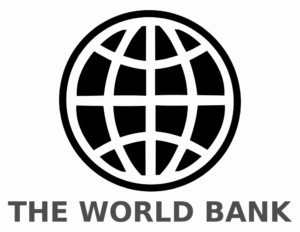The World Bank consists of two of five organizations that together make up the World Bank Group.
Table of Contents
The World Bank Group
The World Bank
These two organizations make up The World Bank.
IBRD: International Bank for Reconstruction and Development
They lend to governments of middle-income and credit-worthy low-income countries.
IDA: International Development Association
They make interest-free loans, called credits, and grants to governments of the world’s poorest countries.
The other three
IFC: International Finance Corporation
They provide financial services to private companies in developing countries. It’s not clear from the brief description I found if it’s just loans, or if they provide equity stakes as well.
MIGA: Multilateral Investment Guarantee Angency
They provide political risk insurance to investors and lenders.
UCSID: International Centre for Settlement of Investment Disputes
They provide facilities around the world where arbitration of investment disputes are conducted.
The World Bank
The rest of this blog post will focus only on the two organizations within The World Bank.
Is The World Bank really a bank?
It is a way for countries to borrow as cheaply as possible, allowing poor countries to take out cheap loans to help tackle poverty and inequality, but it is not really a bank.
This is due to how it’s structured, and where it gets the money it loans out.
While for all practical purposes they may look and act like a bank to a debtor nation, technically they’re not.
International Bank for Reconstruction anhd Development
This is a cooperative that is owned by 189 member countries.
It is the largest development bank in the world.
They provide loans, risk management products (I’m guessing insurance), and advisory services to middle-income and credit-worthy low-income countries.
It was created in 1944 specifically to help Germany rebuild after WW2.
These loans are made to governments, not private businesses.
International Development Association
The IDA provides funds to recipient nations based on income levels and past records of managing their economies after prior IDA projects.
IDA credits (which means loans) carry no interest, or very low rates of interest.
As with the IBRD, these credits are provided to governments, not private businesses.
The top 10 debtors at this time are:
- Nigeria: $2.875 billion
- Pakistan: $2.692 billion
- Ethiopia: $2.505 billion
- Banglasesh: $2.310 billion
- Sudan: $1.885 billion
- Kenya: $1.830 billion
- DRC (Congo): $1.450 billion
- Mozambique: $1.368 billion
- Tanzania: $1.142 billion
- Niger: $1.058 billion
They fund projects focused on five main areas:
- Managing effects of climate change
- Breaking the cycle of conflict and poverty
- Fostering gender equality and empowerment
- Building open, effective, and accountable institutions, government and non government
- Creating jobs and supporting a strong private sector
Do the loans come with strings attached?
Yes, they do. Similar to the strings the IMF attaches to their loans.
Debtor nations need to agree to a series of “structural adjustments” if they want to borrow money.
These structural adjustments require they implement a set of “free market” policies, which some criticize as how multinational corporations are given access to ownership rights of resources within the debtor nation as well as ownership of public institutions, which could be state-owned oil companies or government-owned and operated transit systems.
As such, many critics claim that even their free loans are not free.
Special criticisms are levied for:
Dam construction: They’re often very controversial within the debtor nations as people are generally displaced by the building of the dam.
Unproductive debt: The World Bank is accused of demanding money be spent on projects that provide little to no benefit to the population of the debtor country, and making the payments from these loans requires money to be diverted from productive uses.
What currency or currencies does the World Bank make loans in?
For the IBRD there are four: USD, EUR, JPY, or GBP.
After the loan is disbursed, it is immediately converted to the local currency, presumably through the standard Foreign Exchange market, although I did not find details on this.
I also found reference to the IBRD making loans in local currencies available by issuing local currency bonds.
This seems weird to me as that sounds like the IBRD would be acting as an intermediary between local currency bond buyers and the creditor, which is their national government, which to me at least begs the question as to why the IBRD needed to be involved.
I also found nothing about if the debtor does a local currency conversion, do they pay the loan back in their local currency (which would seem to move risk to the World Bank as a creditor) or require the payments to be made in the original currency, one of the four listed above (which would seem to move risk to the debtor nation).
For IDA credits, I found nothing on which currencies the credits are issued in, or need to be repaid in.
Where does the money the World Bank loans out come from?
They borrow money from the capital markets of the world’s richest countries (which means they sell bonds).
How big is the World Bank investment fund?
I found the World Bank annual report for 2021 which states the IBRD investment portfolio at $85.8 billion, and the IDA net loans outstanding at $177.8 million.
For some reason, I was expecting both to be larger, especially the IDA net loans.
Considering their charter, especially within the IDA, the numbers in the annual report seem small to me.
Some of those numbers don’t add up
Above in this post, is a list of the top 10 IDA debtor nations, with debt amounts specified in billions. For those top ten debtor nations, the total debt is $19 billion and change, which is significantly more than the $177.8 million I found in the 2021 annual report.
Right now, I do not know how to reconcile that massive difference between the two different World Bank sources of information.



